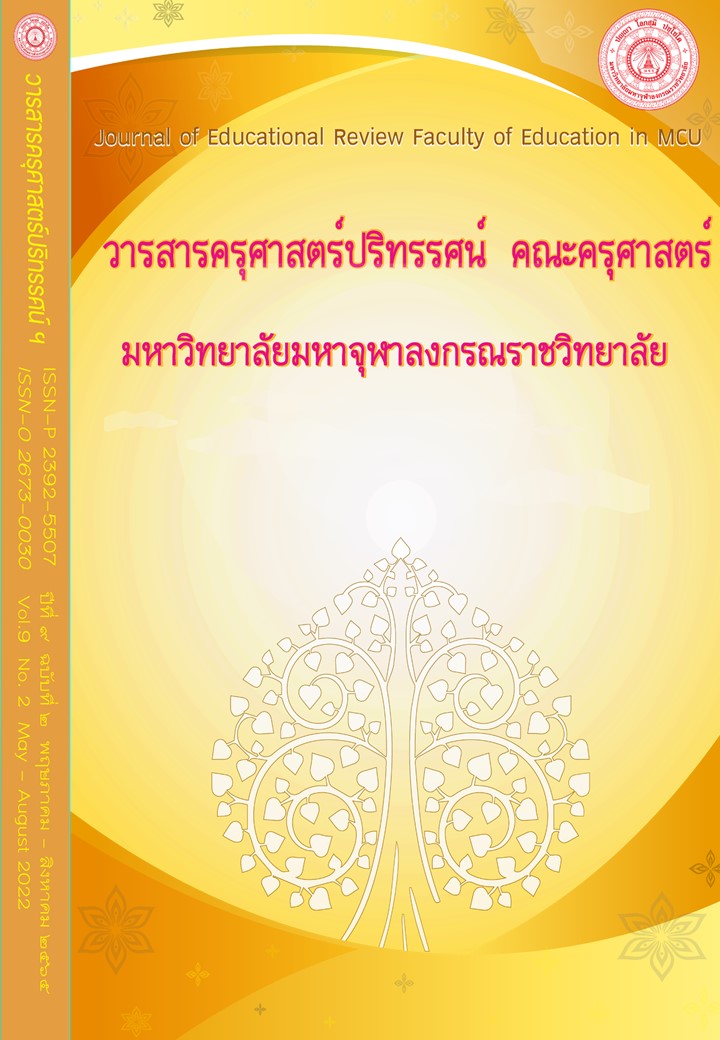THE DEVELOPMENT POLICY PLAN INFLUENCING ON GAP BETWEEN RURAL AND URBAN AREA LEADING TO PEOPLE MIGRATION
Main Article Content
Abstract
This article has the purpose to study on the development policy of National Economic and Social Development Plan influencing on gap between rural and urban area, to study on gap rural and urban area leading to people migration, and to propose development approach that not leading to gap between rural and urban area and migration. This article used qualitative approach with documentary method by analyzing documents, recorded statistics, related researches, journals and news. This study was found that the past development policy according to National Economic and Social Development Plan was initiated by employing main stream capitalism and state-centralization approach prioritizing Major city like Bangkok and leading Bangkok to be Single-Big City and to extend gap between urban and rural to be wider. This kind of gap causes rural people to migrate into capital city for working. Therefore, solution for solving this problem should be decentralizing power to regions and locality to reduce concentration of resources and should delegate the opportunity for local agency to use its own resources to develop its area without orders and allocation from center.
Article Details

This work is licensed under a Creative Commons Attribution-NonCommercial-NoDerivatives 4.0 International License.
ทัศนะและความคิดเห็นที่ปรากฏในบทความในวารสารฉบับนี้ถือเป็นความรับผิดชอบของผู้เขียนบทความนั้นเพียงผู้เดียว และไม่ถือเป็นทัศนะและความรับผิดชอบของกองบรรณาธิการ
กองบรรณาธิการขอสงวนสิทธิ์ในการคัดเลือกบทความลงตีพิมพ์และจะแจ้งให้เจ้าของบทความทราบหลังจากผู้ประเมินบทความตรวจอ่านบทความแล้ว
ต้นฉบับที่ได้รับการตีพิมพ์ในวารสารครุศาสตร์ปริทรรศน์ คณะครุศาสตร์ มหาวิทยาลัยมหาจุฬาลงกรณราชวิทยาลัย ถือเป็นกรรมสิทธิ์ของคณะครุศาสตร์ มหาวิทยาลัยมหาจุฬาลงกรณราชวิทยาลัย ห้ามนำข้อความทั้งหมดหรือบางส่วนไปพิมพ์ซ้ำ เว้นเสียแต่ว่าจะได้รับอนุญาตจากมหาวิทยาลัยฯ เป็นลายลักษณ์อักษร
References
สำนักงานสภาพัฒนาการเศรษฐกิจและสังคมแห่งชาติ. (2564). แผนพัฒนาเศรษฐกิจและสังคม. แหล่งที่มา https://www.nesdc.go.th/main.php?filename=develop_issue สืบค้นเมื่อ 3 พ.ย. 2564.
สำนักงานสถิติแห่งชาติ. (2557). การสำรวจการย้ายถิ่นของประชากร พ.ศ. 2556. แหล่งที่มา http://service.nso.go.th/nso/web/statseries/statseries11.html. สืบค้นเมื่อ 22 พ.ค. 2558.
อารี จำปากลาย และอารีย์ พรหมโม้. (2550) จากหมู่บ้านสู่เมืองกรุง. นครปฐม: สถาบันวิจัยประชากรและสังคม มหาวิทยาลัยมหิดล.
อารี จำปากลาย. (2555). การย้ายถิ่นของแรงงานกับผลกระทบต่อครอบครัวและเด็กในสังคมอาเซียน: สิ่งที่ได้กับสิ่งที่ต้องสูญเสีย. นครปฐม: สถาบันวิจัยประชากรและสังคม มหาวิทยาลัยมหิดล.
Ahsen Sirin. (2011). The effects of Internal Migration on Women’s Health in Turkey. International Journal of Human Sciences. 8(1).
Barcus, Holly R. (2004). Urban-Rural Migration in the USA: An Analysis of Residential Satisfaction. Regional Studies. 38(6). 643-657.
Charles Walker. (2010). Space, Kinship Networks and Youth Transition in Provincial Russia: Negotiating Urban-Rural and Inter-Regional Migration. Europe-Asia Studies Journal. 62(4).
Filiz Garip. (2008). Social Capital and Migration: How do similar resources lead to divergent outcomes. Demography Journal. 45(3).
Lili Ma. (2012). Critical Evaluation of the New Rural-Urban Labor Mobility in China: Reasons and effects of Rural-Urban Labor Migration on Urban and Rural Labor Market. Asian Social Science. 8(3).
Ronald C. Y. Ng. (1968). Recent Internal Population Movement in Thailand. School of Oriental and African Studies, University of London.
Xing C. (2014). Migration, self-selection and income distributions. Economics of Transition. 22(3). 539-576.
Young, Alwyn. (2013). Inequality, the Urban-Rural Gap, and Migration. Quarterly Journal of Economics. 128(4). 1727-1785.
Zinkina and Korotayev. (2010). Urbanization Dynamics in Egypt: Factors, Trends, Perpectives. Pluto Journals. ASQ35.


